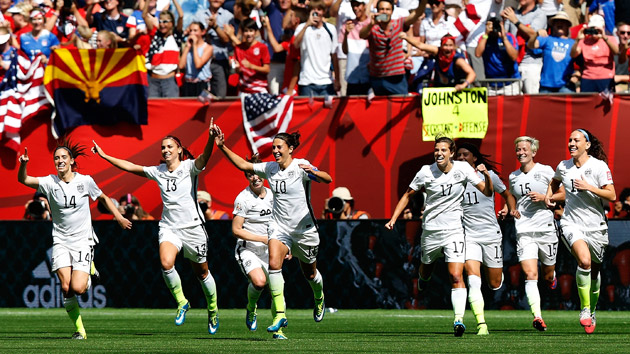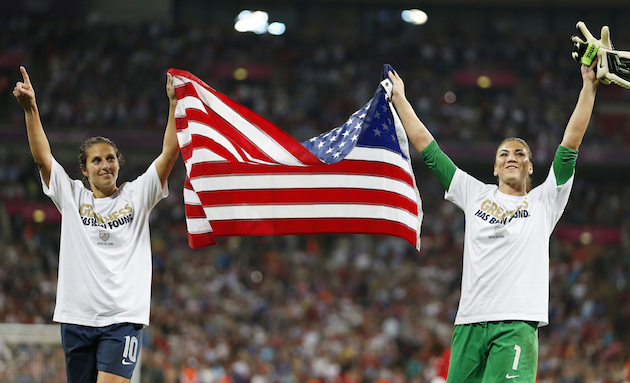
Wang Lili/Xinhua/ZUMA
The latest labor dispute between the World Cup-winning US women’s national soccer team and the US Soccer Federation has illuminated an issue for workers throughout the country: the gender pay gap. On Thursday, five high-profile players filed a complaint with the federal Equal Employment Opportunity Commission accusing the soccer federation of gender-based wage discrimination.
“This is the strongest case of discrimination against women athletes in violation of law that I have ever seen,” Jeffrey Kessler, the players’ lawyer, told the New York Times.
Numbers cited in the EEOC filing show just how vast the divide is. Despite projections that the women’s team will bring in $5 million in profit in the coming fiscal year and nearly $18 million in revenue, the players allege that they are paid four times less than their male counterparts. If the women win 20 exhibition matches, the minimum number the team is expected to play annually, they would earn $99,000 each. Men’s team members would earn $352,500 for doing the same—and would earn $100,000 even if they lost all 20.
US Soccer told the Times that it hadn’t seen the complaint and was “disappointed” by the players’ actions.
“It’s just completely unbalanced,” goalkeeper Hope Solo, who has signed on to the action, told Mother Jones in December. “The argument is, well, women should not get paid as much as men, because they don’t bring in as much revenue. We hear it all the time. Our argument back is that we have the best [television] ratings between the men’s team and the women’s team, and had we gotten more marketing dollars, we would have more ticket revenue.”
Here’s a look at the gender pay gap between the men’s and women’s national teams, according to the players’ complaint.
















